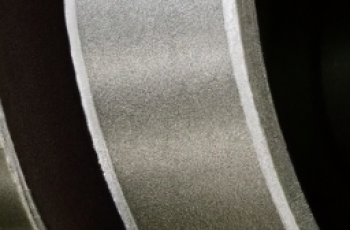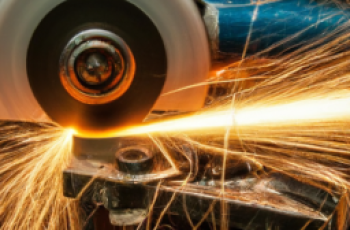If you’re looking to add a new level of versatility to your woodworking projects, then look no further than the angle grinder. This powerful tool, often associated with metalwork, can be a game-changer when it comes to shaping, carving, and polishing wood. In this article, we will explore the various ways you can utilize an angle grinder in your woodworking endeavors, from creating intricate designs to smoothing out rough edges. So dust off that old angle grinder and get ready to discover a whole new world of possibilities within the realm of woodworking.
Choosing the Right Angle Grinder
An angle grinder is a versatile and powerful tool that can be utilized in a variety of woodworking tasks. Whether you are cutting, shaping, smoothing, or joining wood, it is essential to choose the right angle grinder for the job. Here are some factors to consider when selecting an angle grinder:
Factors to Consider when Choosing an Angle Grinder
-
Power: The power of the angle grinder is measured in terms of the motor’s wattage or horsepower. Higher wattage or horsepower means more cutting power, which is suitable for heavy-duty tasks. However, for woodworking projects, a grinder with a power range between 5 to 7 amps should be sufficient.
-
Disc Size: Angle grinders come in various disc sizes, typically ranging from 4.5 to 9 inches. The disc size determines the depth of the cut and the surface area covered during grinding. For most woodworking tasks, a 4.5 to 7-inch disc size would be ideal.
-
Speed: The speed of the grinder is measured in rotations per minute (RPM). Higher RPMs provide faster cutting or grinding, but it may be harder to control, especially for beginners. Opt for an angle grinder with adjustable speed settings to match the requirements of different woodworking tasks.
-
Handle Design: The handle design of the angle grinder plays a crucial role in providing comfort and control during operation. Look for a grinder with an ergonomic handle that allows for a secure grip and reduces fatigue during extended use.
Different Types of Angle Grinders
There are primarily two types of angle grinders available in the market: corded and cordless.
-
Corded Angle Grinders: Corded angle grinders require a power source and are typically more powerful than their cordless counterparts. These grinders are suitable for heavy-duty tasks and prolonged use where continuous power is necessary.
-
Cordless Angle Grinders: Cordless angle grinders are powered by rechargeable batteries, offering more portability and convenience. However, they may have slightly less power compared to corded grinders. Cordless grinders are ideal for small to medium woodworking projects or tasks that require mobility.
Features to Look for in an Angle Grinder
When choosing an angle grinder for woodworking, consider the following features that can enhance your woodworking experience:
-
Spindle Lock: A spindle lock allows for easy and quick disc changes without the need for additional tools. This feature is particularly useful when switching between different discs for various woodworking tasks.
-
Adjustable Guard: An adjustable guard provides added safety by protecting your hands and body from sparks and debris while grinding or cutting. Look for a grinder with a easily adjustable guard that can be positioned for maximum protection.
-
Vibration Control: Woodworking with an angle grinder can cause significant vibration, leading to hand fatigue and reduced accuracy. Opt for a grinder with built-in vibration control features such as rubberized handles or dampening systems to minimize vibrations.
-
Dust Collection: Woodworking often produces a substantial amount of sawdust and debris. An angle grinder with a dust collection system or compatibility with external dust collection devices can help keep your work area clean and improve visibility.
Selecting the Appropriate Woodworking Discs
Once you have chosen the right angle grinder, it is essential to select the appropriate discs for your specific woodworking tasks. Different woodworking discs are designed for different purposes and materials. Here are the various types of discs commonly used in woodworking:
Types of Discs for Woodworking
-
Cutting Discs: Cutting discs, also known as abrasive discs or thin kerf wheels, are designed for making precise cuts in wood. These discs have a tooth-like edge that bites into the wood during cutting. They come in various thicknesses and can be used to cut boards, beams, or other wooden materials.
-
Grinding Discs: Grinding discs, also called abrasive discs or sanding discs, are used for smoothing and shaping wood surfaces. These discs have sandpaper-like surfaces made of abrasive materials, making them suitable for removing rough edges, splinters, or paint from wood.
-
Flap Discs: Flap discs are versatile discs that can perform both grinding and finishing tasks. These discs have multiple flaps of sandpaper that are arranged around a central hub. They are excellent for blending different wood surfaces, removing blemishes, or achieving a smooth finish.
-
Wire Brush Discs: Wire brush discs are ideal for cleaning or stripping wood surfaces. These discs have wire bristles that effectively remove paint, rust, or other debris from the wood. Wire brush discs are commonly used as the first step in refinishing or restoring old wooden furniture.
Choosing the Right Grit
When choosing sanding discs, one crucial factor to consider is the grit. The grit refers to the coarseness of the abrasive material on the disc’s surface. Different grits are suitable for different woodworking applications:
-
Coarse Grit: Coarse grit discs, typically ranging from 24 to 60 grit, are ideal for rough shaping or aggressive material removal. They are useful for quickly removing large amounts of wood, leveling uneven surfaces, or smoothing out rough edges.
-
Medium Grit: Medium grit discs, ranging from 80 to 120 grit, are suitable for general sanding and smoothing tasks. They can be used to remove scratches, blemishes, or paint, as well as preparing the wood for finishing.
-
Fine Grit: Fine grit discs, commonly ranging from 180 to 320 grit, are used for fine sanding, achieving a smooth finish, or polishing the wood surface. These discs are excellent for removing any remaining imperfections, creating a polished appearance, or preparing the wood for staining or painting.
Considerations for Cutting or Shaping Wood
When it comes to cutting or shaping wood using an angle grinder, the type of disc and technique used can significantly affect the outcome. Consider the following:
-
Cutting Discs: When using cutting discs, it is crucial to position the angle grinder at the desired angle and apply even pressure to achieve a clean and precise cut. Take care to follow the line or mark on the wood to avoid deviation or uneven cuts.
-
Grinding Discs: Grinding discs are commonly used to smooth or shape wood surfaces. To obtain an even and smooth result, move the grinder in a controlled back-and-forth motion or in circular motions. Avoid excessive pressure, as it can cause uneven grinding or gouging.
Appropriate Discs for Finishing and Polishing
To achieve a polished and refined finish on your woodworking projects, consider the following discs:
-
Flap Discs: Flap discs are excellent for finishing and blending different wood surfaces. Choose a flap disc with a fine grit to achieve a smooth finish. Use the grinder in a controlled motion, applying light pressure to avoid removing excessive material.
-
Polishing Discs: Polishing discs, also known as buffing discs, are designed specifically for enhancing the sheen and smoothness of wooden surfaces. Apply polishing compounds or compounds specifically designed for wood on the disc to achieve a glossy, mirror-like finish.
Continued in the next part…



